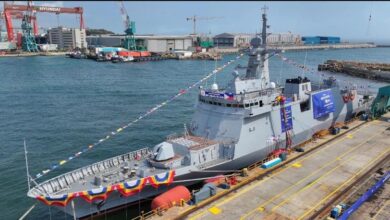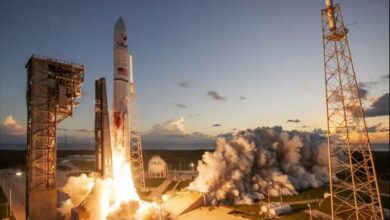Philippines, China Agree to ‘De-Escalate’ South China Sea Tensions
The Philippines and China agreed on Tuesday to “de-escalate tensions” over the South China Sea, Manila said, following a violent clash in the disputed waters last month.
Manila and Beijing have a long history of maritime territorial disputes in the hotly contested waterway but last month’s incident was the most serious in a number of escalating confrontations.
Chinese coast guard personnel wielding knives, sticks, and an axe surrounded and boarded three Philippine navy boats on June 17 during a resupply mission to Second Thomas Shoal.
A Filipino soldier lost a finger in the clash, with Manila also accusing the Chinese coast guard of looting guns and damaging three boats as well as navigational and communication equipment.
Beijing insisted its coast guard behaved in a “professional and restrained” way and blamed Manila for the clash.
A handful of Filipino troops are stationed on a rusty warship deliberately grounded on Second Thomas Shoal in 1999 to assert Manila’s claims to the area.
Philippine foreign affairs undersecretary Theresa Lazaro and China’s vice foreign minister Chen Xiaodong had “frank and constructive discussions” on Tuesday, the Philippine foreign ministry said in a statement after the talks.
“The two sides discussed their respective positions on Ayungin Shoal and affirmed their commitment to de-escalate tensions without prejudice to their respective positions,” the statement said, using the country’s name for Second Thomas Shoal in the Spratly Islands.
“Noting recent incidents in the South China Sea, both sides recognised that there is a need to restore trust, rebuild confidence, and create conditions conducive to productive dialogue and interaction,” it said, adding that “significant differences remain.”
China claims almost the entirety of the South China Sea, brushing aside competing claims from several Southeast Asian nations, including the Philippines, and an international ruling that its stance has no legal basis.
Chinese forces have used water cannon and military-grade lasers and collided with Filipino resupply vessels and their escorts in previous confrontations near disputed reefs.
Philippine Navy Rear Admiral Roy Vincent Trinidad told reporters on Tuesday that the June 17 incident was “the most aggressive” in “recent history”.
“The reason why we are calling this out is because we don’t want any unintended consequence,” Trinidad told reporters.
“Basically, their actions increase the risk for miscalculation.”
‘Actions Speak Louder Than Words’
The latest confrontation has fueled concerns that the dispute could drag in the United States, which has a mutual defense pact with Manila.
The Philippine government has said that it does not consider the June 17 clash as an “armed attack” that would trigger a provision in the treaty for Washington to come to Manila’s aid.
In Washington, State Department spokesman Vedant Patel said that the United States “would welcome any efforts to de-escalate tensions in the South China Sea.”
But he added that in dealing with Beijing, “actions speak louder than words.”

The two sides signed an arrangement Tuesday on improving the Philippines-China Maritime Communications Mechanism and agreed to continue discussions between their coast guards.
China and the Philippines launched the consultative meeting in 2017 to promote the peaceful management of conflicts in the South China Sea.
Philippine Foreign Affairs Secretary Enrique Manalo said last week the Manila meeting would look to establish “confidence-building measures” that can create the basis for “more serious discussions.”
“We still believe in the primacy of dialogue, and diplomacy should prevail even in the face of these serious incidents, though I admit it’s also a challenge,” Manalo told a Philippine Senate public hearing on the Second Thomas Shoal confrontation.
Second Thomas Shoal lies about 200 kilometers (120 miles) from the western Philippine island of Palawan and more than 1,000 kilometers from China’s nearest major landmass, Hainan island.
China deploys coast guard and other boats to patrol the waters around the shoal and has turned several reefs into artificial militarized islands.












